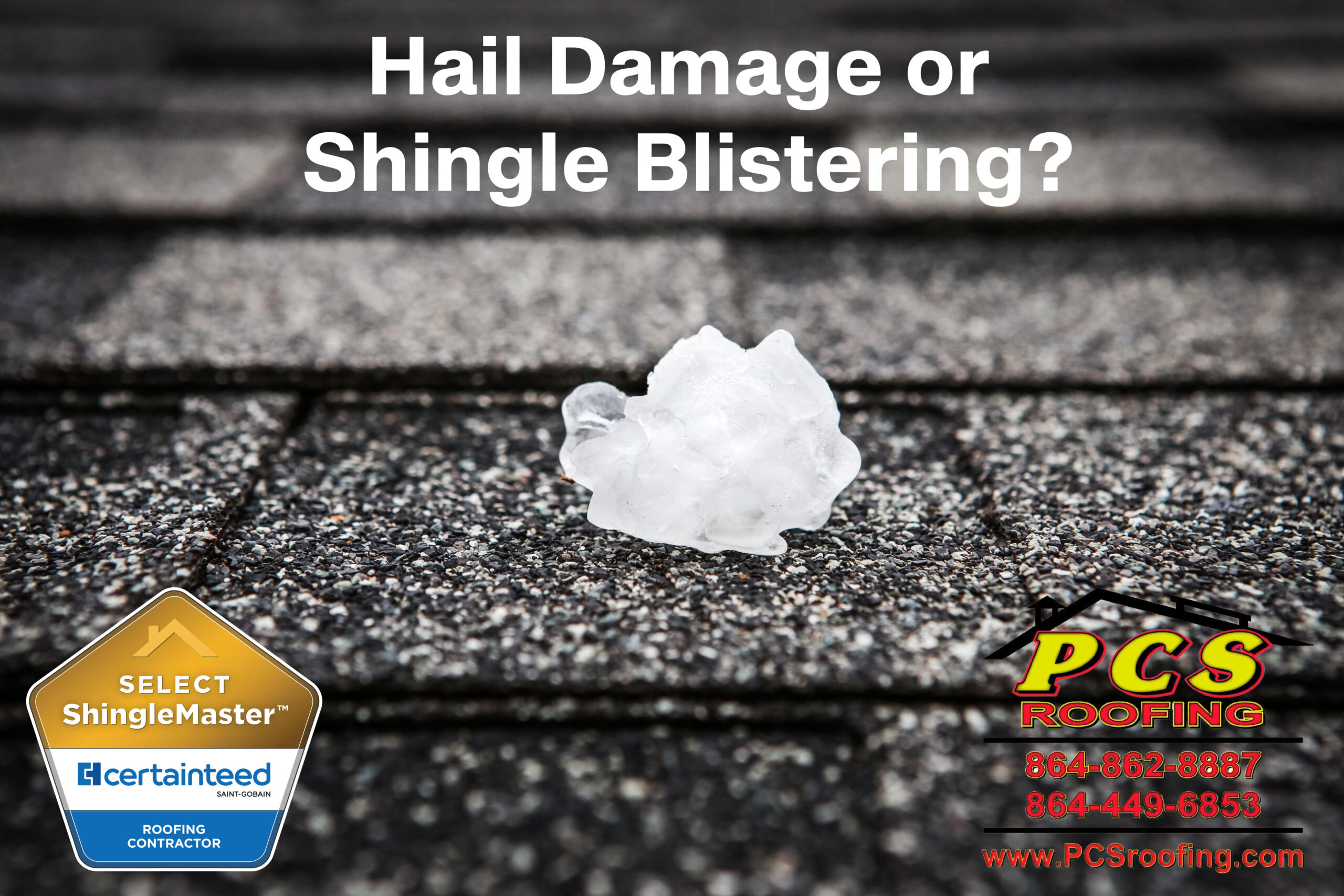Tips On How To Tell The Difference
We tend to think that our roofs are safe from everything except the most extreme weather events, but that isn’t true. Hail can reduce the life of your roof and even cause hail damage down to the wood if it hits hard enough. However, shingle blistering, a condition that can arise from age, poor manufacturing, or poor installation, can look a lot like hail damage to the untrained eye. Since it is rare for a homeowner to look at their roof except after a weather event, the tendency to misidentify blistering for hail damage is strong. Below, we will help you to properly identify hail damage vs blistering.
Why The Confusion And Why Does It Matter?
Because we only look at our roof when we are concerned about damage, our minds are predisposed to blame whatever we see as storm damage. Regarding blistering, hail storms will pop most of the blisters, leaving behind small craters that look a great deal like divots from hail strikes.
This matters to insurance companies, so it should matter a great deal to you. There is no coverage for blistering, while most insurance plans do cover hail damage. Identifying one from the other will help you understand the insurance investigator’s report and respond, backed by knowledge if you think they are in error.
Blistering
Blistering looks exactly like it sounds. Your shingles develop raised dimples on the surface either from poor manufacturing, poor installation, or the ravages of time. It is a natural progression in the life of your shingles but shouldn’t occur within the warranty period. When viewed before suffering an extreme weather event, it is easily identifiable as blistering. It is more difficult to identify after a hail storm.
The blisters will be mostly popped (which also happens on its own over time) due to being struck by pieces of hail and can closely resemble the pockmarks of hail striking your roof. But there will be minor differences. Popped blisters will have a slight rise around the divot, the residue of the raised area where the blister had formed.
Hail Damage
Hail leaves divots in your roof shingles, with some areas being bare where the granules have been knocked away. There will be no raised area around the divot, just missing granules and possibly a dent in the substrate material of the shingle. The damage is difficult to see from any distance but is no less a problem. Damaged shingles will eventually fail earlier than expected, allowing water to get to the wooden structure of your roof and cause leaks into your home.
Additional Clues
Proving that your shingles have been damaged by hail instead of blistering is the difference between paying a small deductible or paying for a whole roof. To help you prove your case, we can help by using our professional skills to identify the problem areas and work with your Insurance Adjuster.
It Looks So Minor, So Why The Big Deal?
It may seem a minor issue to your eyes, but not to your roof system. Think of your skin. If you get a small scratch, it is barely a concern. But if that scratch is on your hands and you are constantly working in a dirty environment crawling with microbes, that tiny opening in your skin becomes a huge problem.
Your roof is the same way. It is an interlocking system that works together to protect your home from constant assault by the elements. Any break in that system will eventually cause it to fail. Repairing your roof can be a large expense but far cheaper than the repairs you will have down the road if you let your roof go. While the repair work must be done as soon as possible, having it be a covered insurance expense is preferable to taking care of it all on your own. And the best way for that to happen is having PCS Roofing inspect your roof.
Even if the issue results from blistering, you may still be within the warranty period and share part of the repair with the manufacturer. Knowing how to prove your case is important either way.
The best thing you can do if you think you have damage, is to have an expert inspect your roof. Contact PCS Roofing at 864-862-8887. We can help you determine if it is time to replace or repair your roof with a free inspection.
Follow and like us on Facebook to keep up to date with more tips on how to take care for your roof!

